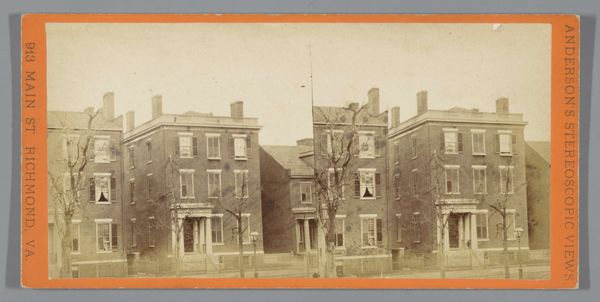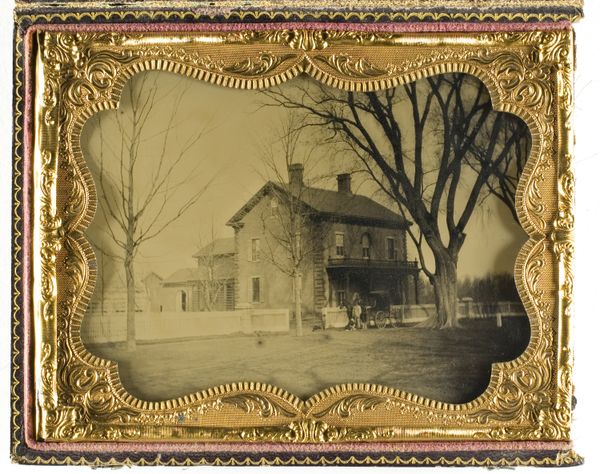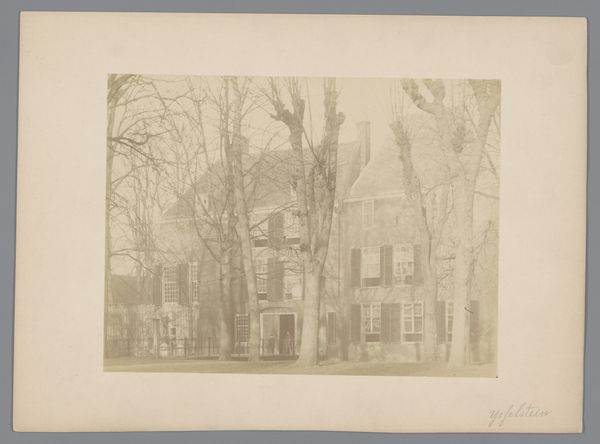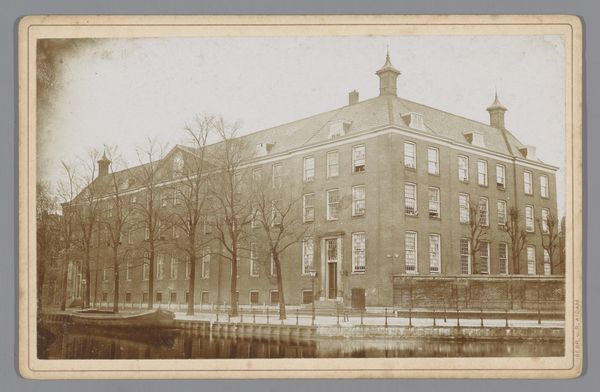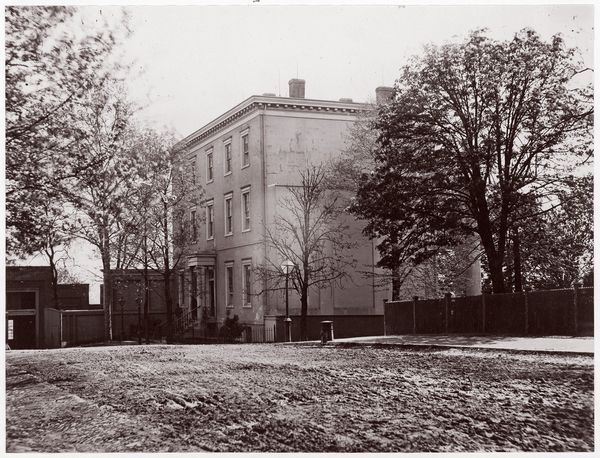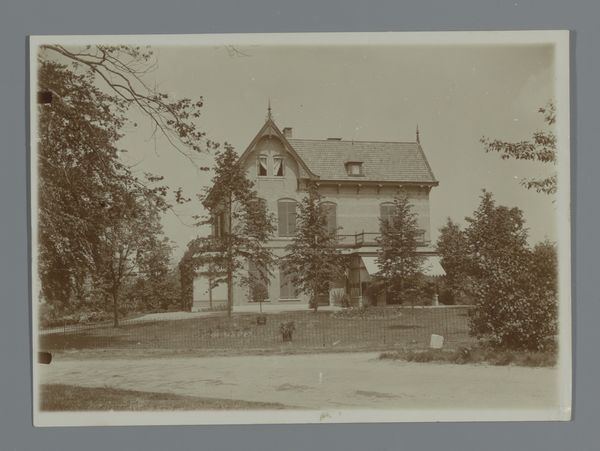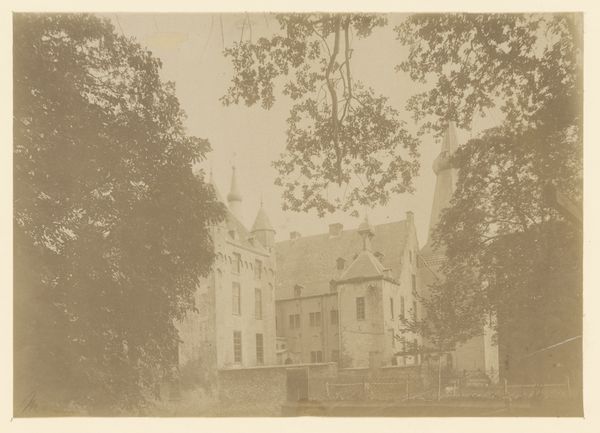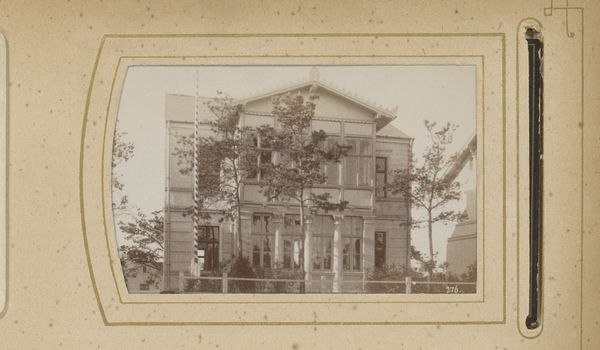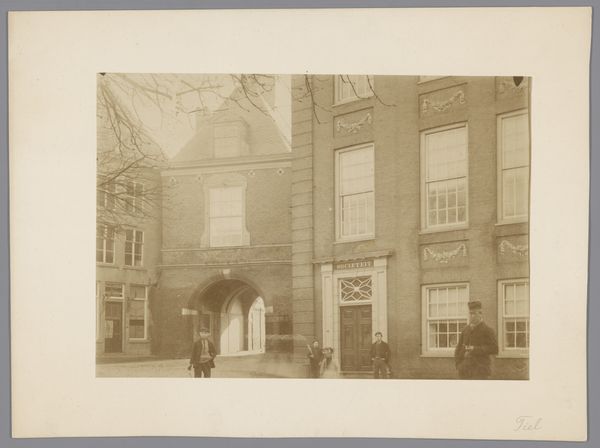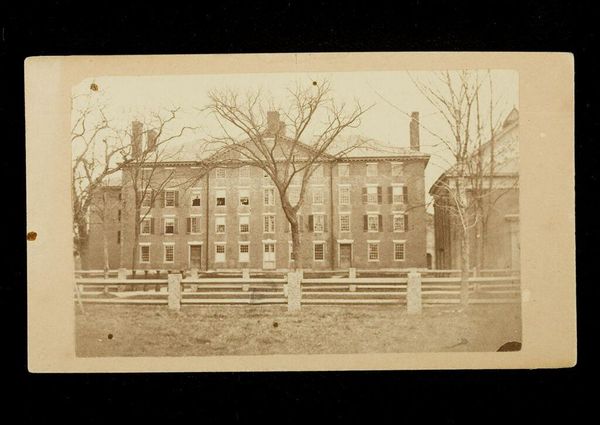
photography, albumen-print
#
muted colour palette
#
layered composition
#
landscape
#
street-photography
#
photography
#
earthy tone
#
muted colour
#
cityscape
#
street
#
albumen-print
#
realism
Dimensions: height 60 mm, width 89 mm
Copyright: Rijks Museum: Open Domain
Editor: This albumen print, "Gezicht op een straat, Nederland" – or "View of a street, Netherlands" – by Laurens Lodewijk Kleijn, dating back to sometime between 1865 and 1900, has a rather ghostly, almost ethereal quality to it. What stands out to you in terms of how it reflects the social context of the time? Curator: What immediately grabs me is the sense of planned urban development versus the reality of lived experience. Notice the tree, supported so artificially, juxtaposed against the imposing architecture. Photography in this era was rapidly evolving as both an art form and a tool for documentation. So, was Kleijn, consciously or unconsciously, commenting on the changing Dutch urban landscape, the imposition of order onto nature? The print's materiality itself becomes part of the story, as it is very fragile and represents the rise of photography as a medium. Does the negative version speak to a different reality, something ‘undeveloped?’ Editor: I see your point about urban planning; there is something staged about the perspective, but how do you think this image played a role in constructing a specific national identity or projecting a particular image of Dutch society? Curator: This kind of photographic image, with its realistic portrayal of everyday life, contributed to a sense of shared national identity in a rapidly modernizing society. But it’s also important to ask whose perspective is being presented here and how that shapes the narrative. Do the visible support structure of the tree or figures of the photo mean to convey permanence? Editor: That’s a helpful framework, to think of identity as performative, as conveyed rather than simply reflecting reality. The ghostly figures remind me of that ephemerality you speak of. Curator: Exactly! Thinking about its role in the art market, photography gradually gained acceptance but also contended with painting, and also popular printed media. That affected both what was produced and what survived. Editor: Considering those market dynamics, this makes me consider its status as a record and an artwork simultaneously. It’s really pushed me to consider beyond the pure aesthetics of the image. Curator: It is a nice synthesis of the many ways of thinking about the world, don't you agree?
Comments
No comments
Be the first to comment and join the conversation on the ultimate creative platform.
